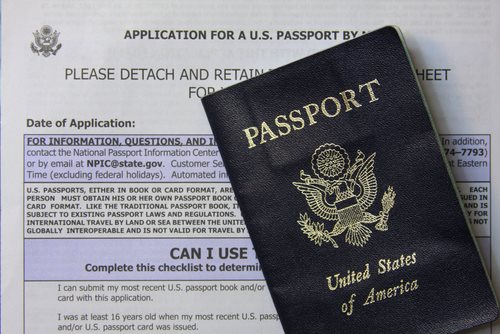
Title 22 of the United States Code – The Detailed Guide
Title 22 of the United States Code (USC), also known as the Foreign Relations and Intercourse Code, is one of the many titles that make up the United States Code. The code is a compilation of federal laws created by the U.S. Congress to ensure the smooth functioning of the U.S. government’s foreign policy and international relations. Title 22 contains over 500 laws detailing everything from diplomatic protocol and foreign aid to immigration policies and international trade. In this article, we will delve deeper into Title 22 of the United States Code, its history, and its current relevance.
History of Title 22
Title 22 of the U.S. Code has gone through several iterations since its inception in 1948. The current version of Title 22 contains 62 chapters, some of which are further divided into subchapters and sections. The code has undergone several amendments since its introduction, with many updates reflecting changes in international relations and U.S diplomatic policies.
One of the most significant changes to Title 22 was in 1999 when Congress passed legislation to reorganize the State Department and the U.S. Agency for International Development (USAID) in an effort to streamline diplomatic efforts and foreign aid allocation. This reorganization resulted in changes to Chapters 1 and 2 of Title 22, which focused on the State Department’s structure and responsibilities and the organization of USAID.
Title 22 has also been updated to reflect the changing nature of the U.S. relationship with foreign countries. In 2011, the U.S. lifted sanctions on Libya and restored diplomatic relations with the country, resulting in the repeal of Title 22, Section 6039 that had previously enacted such sanctions. Updates to Title 22 have occurred as recently as 2021, with the passage of the American Rescue Plan Act, which allocated funds for international COVID-19 relief efforts.
Structure of Title 22
Title 22 of the U.S. Code is divided into 62 chapters, covering a wide range of topics and subtopics related to U.S. foreign policy and international relations. Here’s a brief overview of some of the more notable chapters:
Chapter 1 – Department of State: This chapter outlines the structure of the State Department and the roles and responsibilities of its various bureaus and offices.
Chapter 2 – United States Agency for International Development: This chapter details the structure and goals of USAID and its role in foreign aid, development, and humanitarian efforts.
Chapter 3 – Foreign Service: This chapter includes laws governing the Foreign Service, such as diplomatic and consular officers, ambassadors, and other personnel involved in U.S. foreign policy.
Chapter 4 – Foreign Service Buildings: This chapter outlines the planning and construction of U.S. embassy and consulate buildings, as well as the leasing and acquisition of property abroad.
Chapter 5 – International Conventions, Treaties, Agreements, and Organizations: This chapter details the U.S.’s involvement with international organizations and agreements, such as the United Nations, the World Health Organization, and the World Trade Organization.
Chapter 6 – Foreign Economic Policy: This chapter focuses on U.S. trade policy and U.S. involvement with international financial institutions like the International Monetary Fund and the World Bank.
Chapter 7 – International Bureau of Weights and Measures: This chapter outlines the International Bureau of Weights and Measures and its role in promoting global measurement standards.
Chapter 8 – International Religious Freedom: This chapter addresses the promotion of religious freedom around the world.
Chapter 9 – Foreign Warnings: This chapter includes laws that require the State Department to issue warnings to U.S. citizens traveling abroad about potential dangers and health risks.
Chapter 10 – International Expositions: This chapter outlines the regulations and requirements for U.S. participation in international expositions and exhibitions.
Relevance of Title 22 Today
Title 22 of the U.S. Code remains highly relevant and important today, particularly as the U.S. continues to navigate complex international relations and complex issues like global health, climate change, and economic inequality.
One of the most significant areas of focus in Title 22 is foreign aid. USAID, which falls under Chapter 2, is the U.S. government’s primary agency for foreign assistance and development. In 2020, the U.S. provided $44.13 billion in foreign aid, including funding for health programs, economic development, education, and humanitarian assistance.
Title 22 is also highly relevant regarding immigration policies. As countries around the world face refugee crises and immigration issues, the U.S. has seen an influx of migrants attempting to enter the country, resulting in increased attention to the policies outlined in Title 22. Chapter 8, for example, addresses international religious freedom, an issue that has become increasingly relevant as the U.S. grapples with refugee policies and the rights of migrants.
Beyond these issues, Title 22 also plays a crucial role in outlining U.S. involvement with international organizations like the United Nations and detailing U.S. policy regarding international trade and economic development. As the U.S. continues to navigate complex international relations, the laws outlined in Title 22 will play an increasingly important role in shaping U.S. foreign policy and international relations.
Conclusion
Title 22 of the United States Code is an essential tool for U.S. policymakers and diplomats involved in international relations and foreign policy. By detailing the legal mechanisms through which the U.S. interacts with other countries, Title 22 provides a framework for U.S. involvement in the world. As the U.S. continues to face complex international issues, Title 22 will play a critical role in shaping the country’s foreign policy and diplomatic efforts.
People interested in the laws of the United States which pertain to immigration can refer, for one, to the source of Title 22, 2601 of the United States Code. This section of the officially codified compilation of federal legal statutes is entitled “Refugees and migration.” The provisions contained in Title 22, 2601 specifically place the subject of United States immigration in the wider context of the United States government’s relations with other nation states Out of the 86 chapters included in United States Code, Title 22, the 2601 section is included in 36, which is entitled “Migration and Refugee Assistance.”
In addition to the initial and most immediately relevant section of Title 22, 2601, Chapter 36 of this section of the overall United States Code also includes five additional sections, as pertain to subjects such as Presidential Authorization, Treasury funding of U.S. government activities related to immigration, and the ability to audit such funds as is enjoyed by the United Nations High Commissioner for Refugees.
United States Code Title 22, 2601 includes six different sections, identified alphabetically. (a) pertains to the subject of “United States membership in International Organization for Migration; contributions to Organization;” (b) is on the subject of “Appropriations for assistance to refugees;” (c) is on “United States Emergency Refugee and Migration Assistance Fund; appropriations;” (d), “Information to Congressional committees;” (e), “Continued availability of certain funds;” and (f), “Restrictions on foreign assistance not applicable to migration and refugee assistance.” The first provision of (a) allows for Presidential decisions as to the United States’ status in the International Organization for Migration.

























